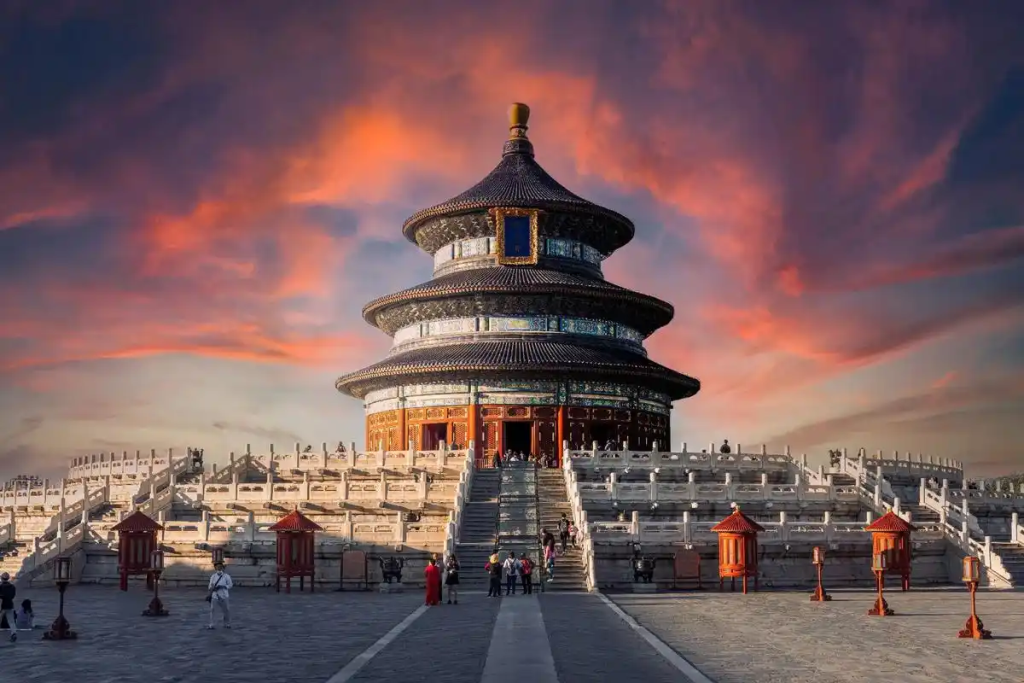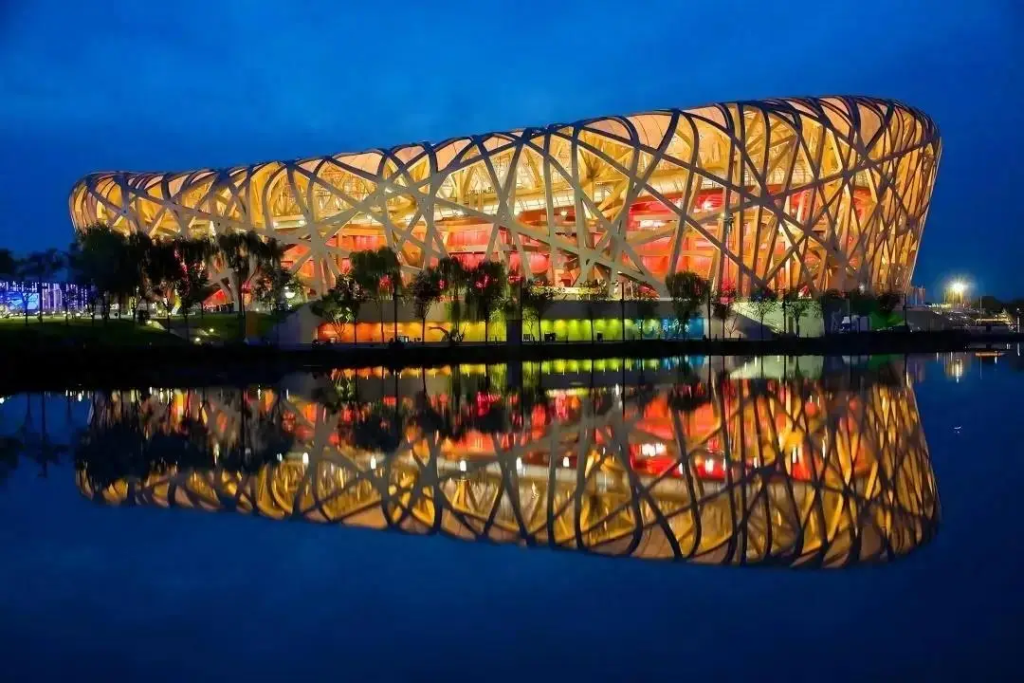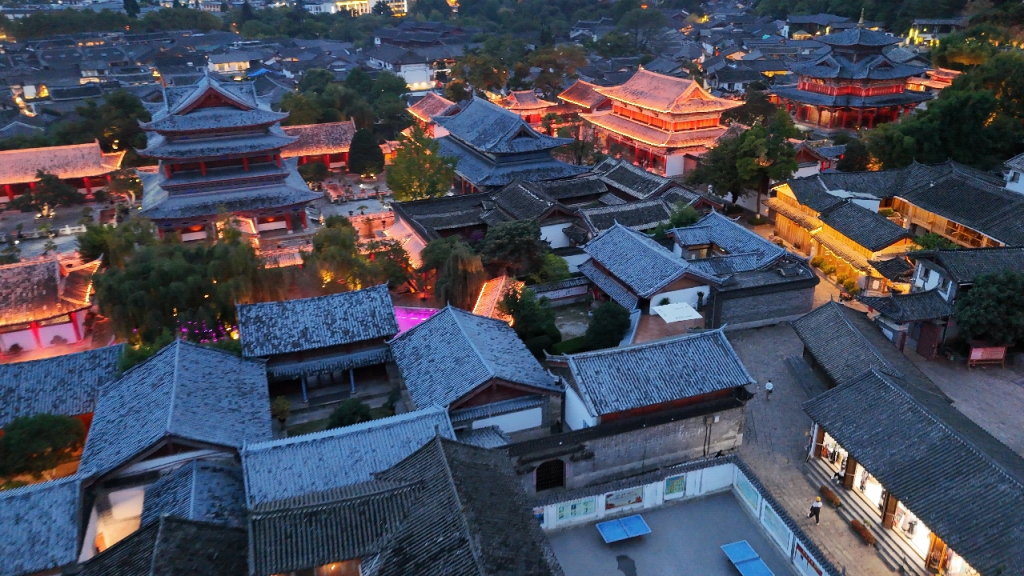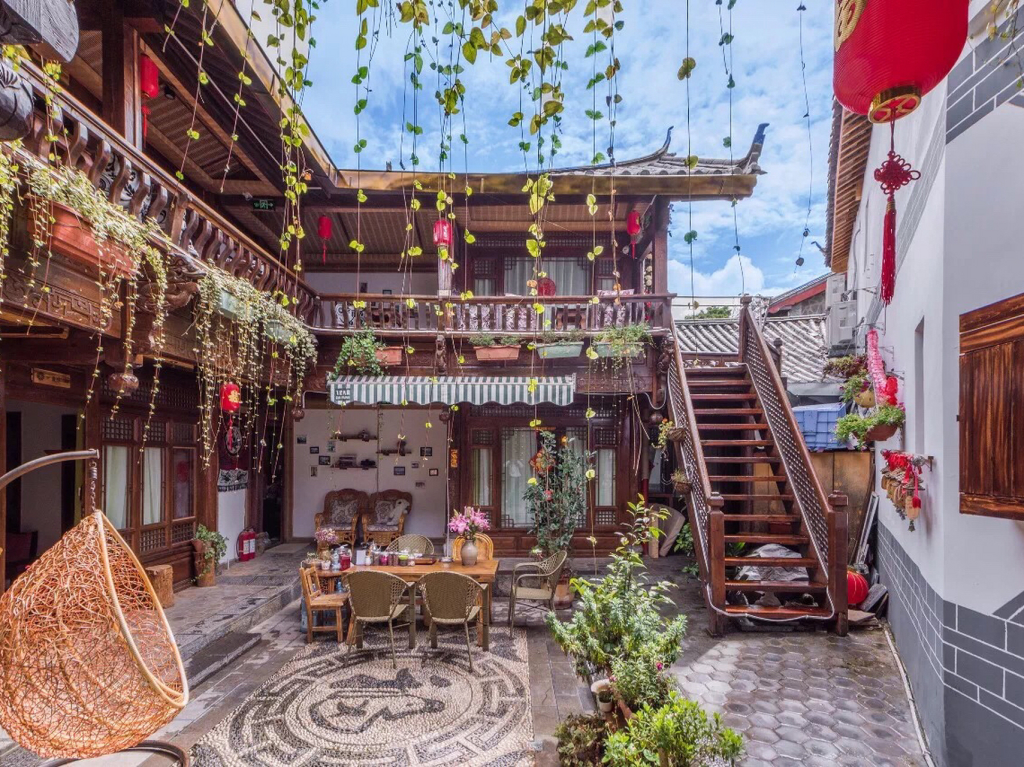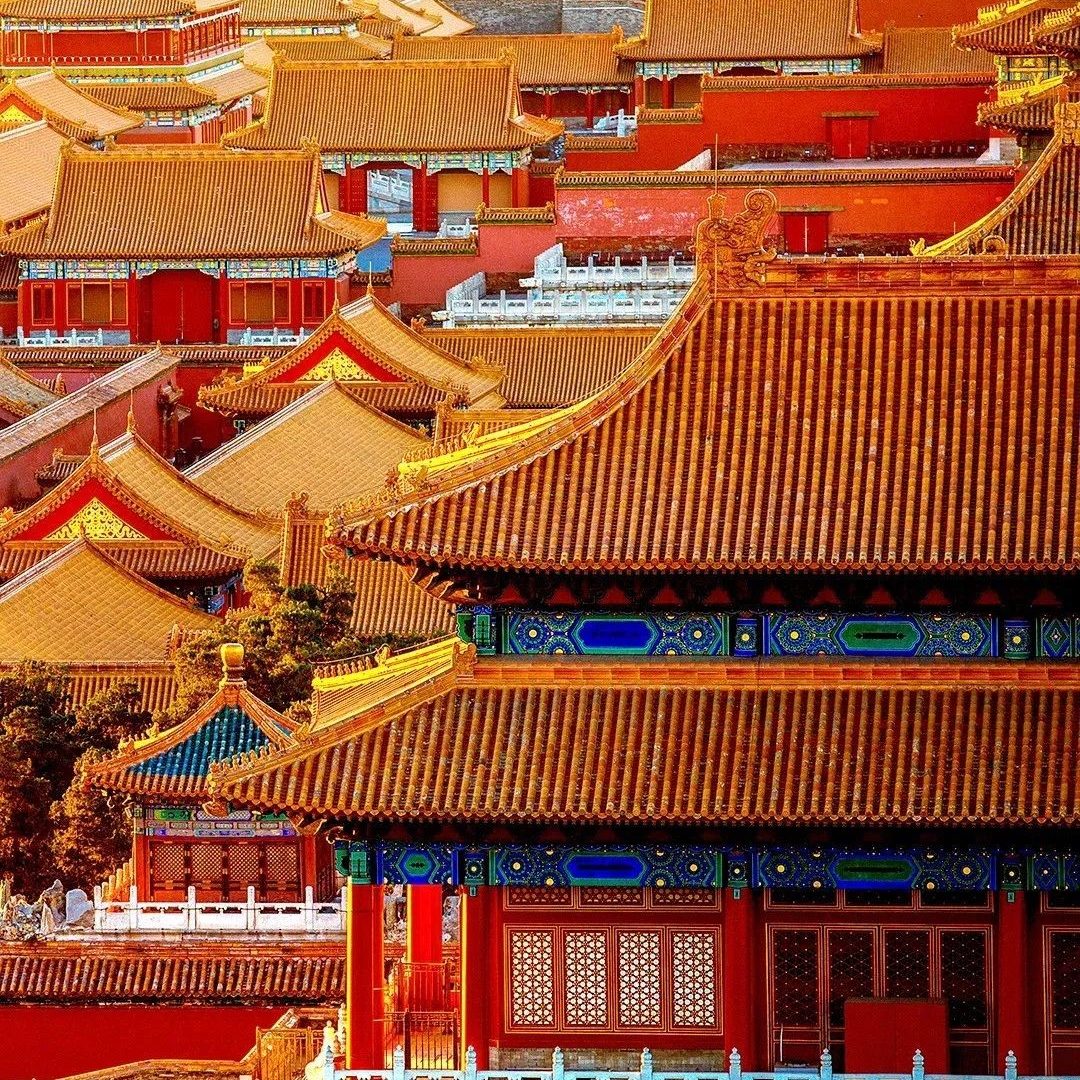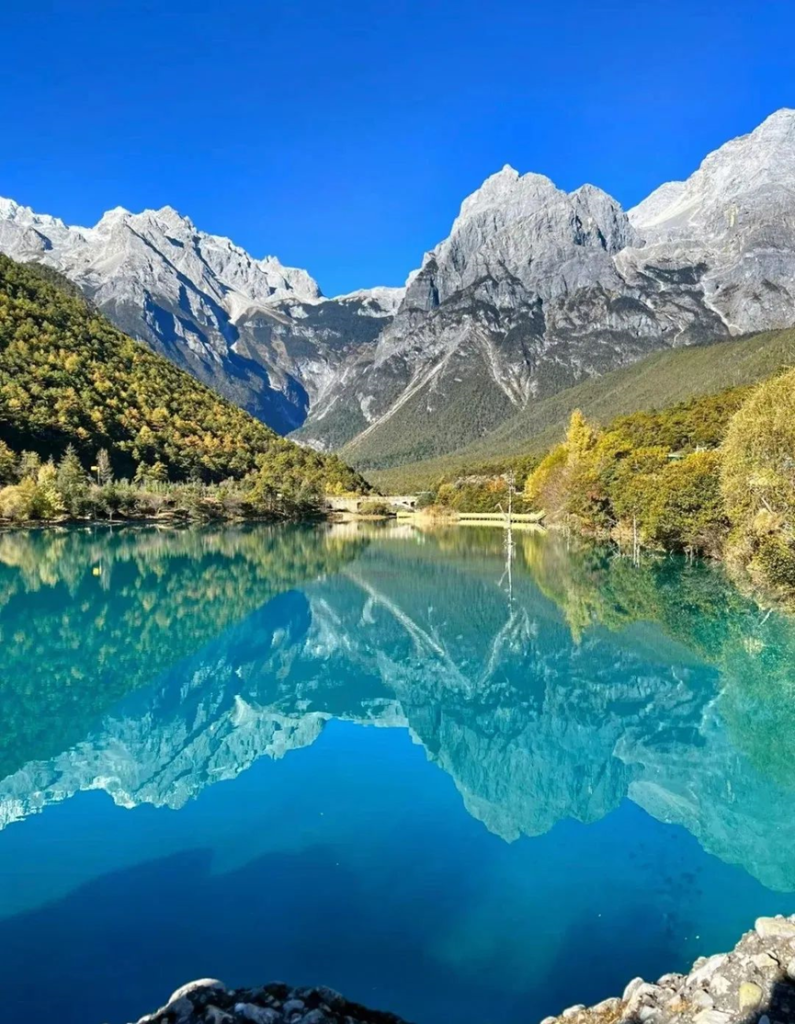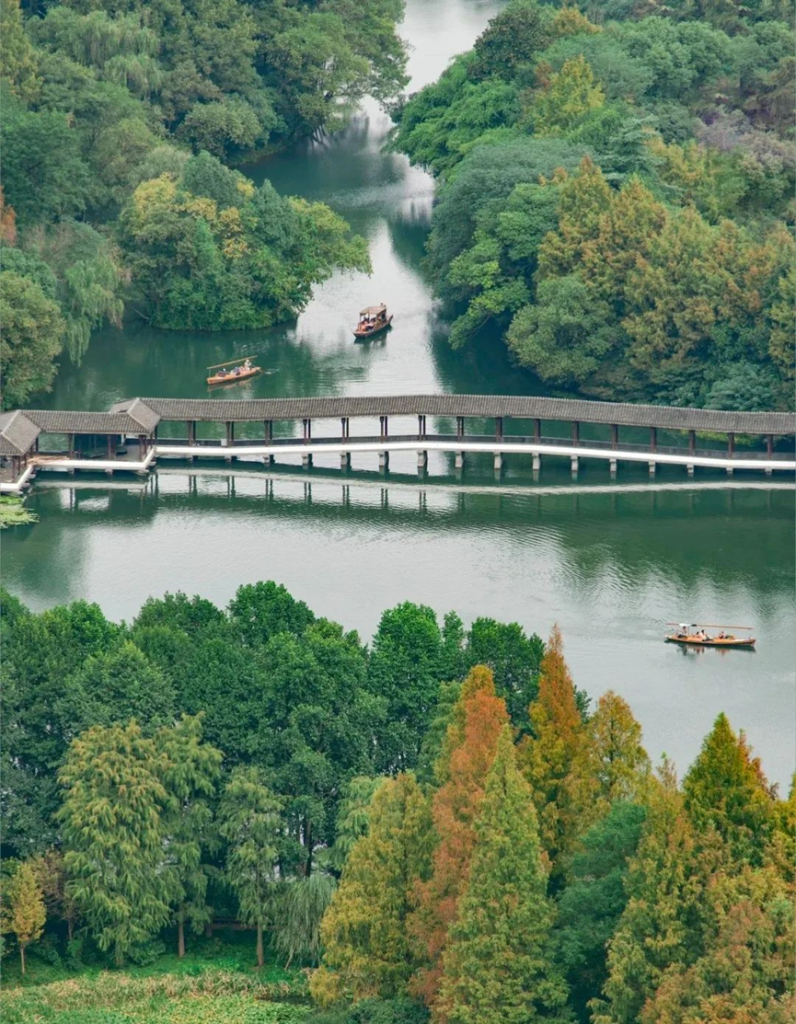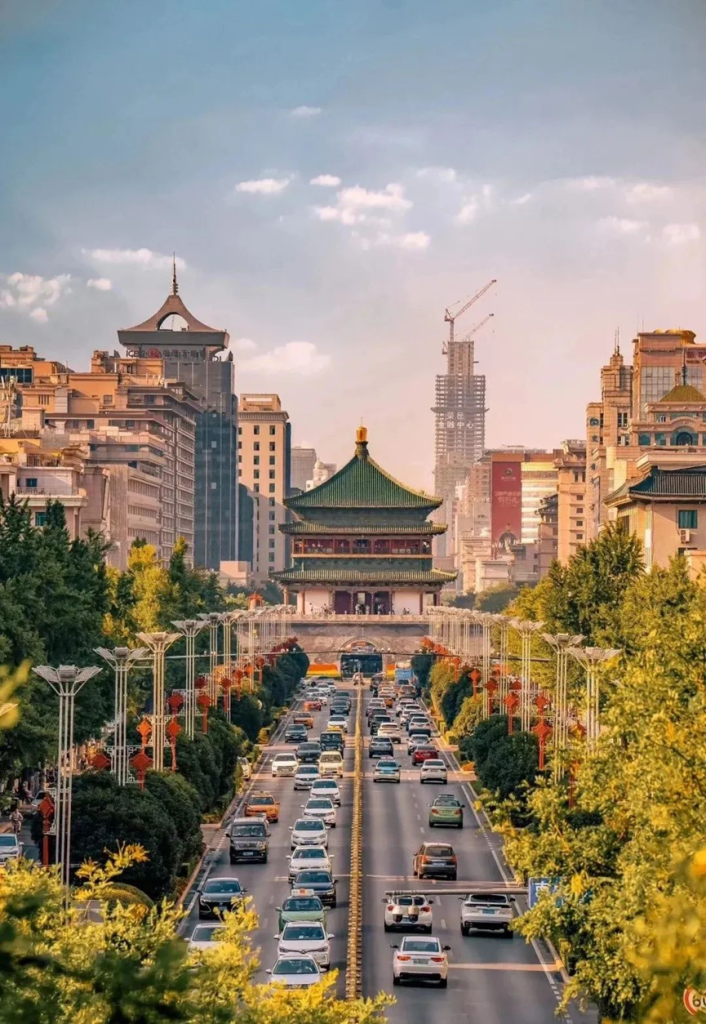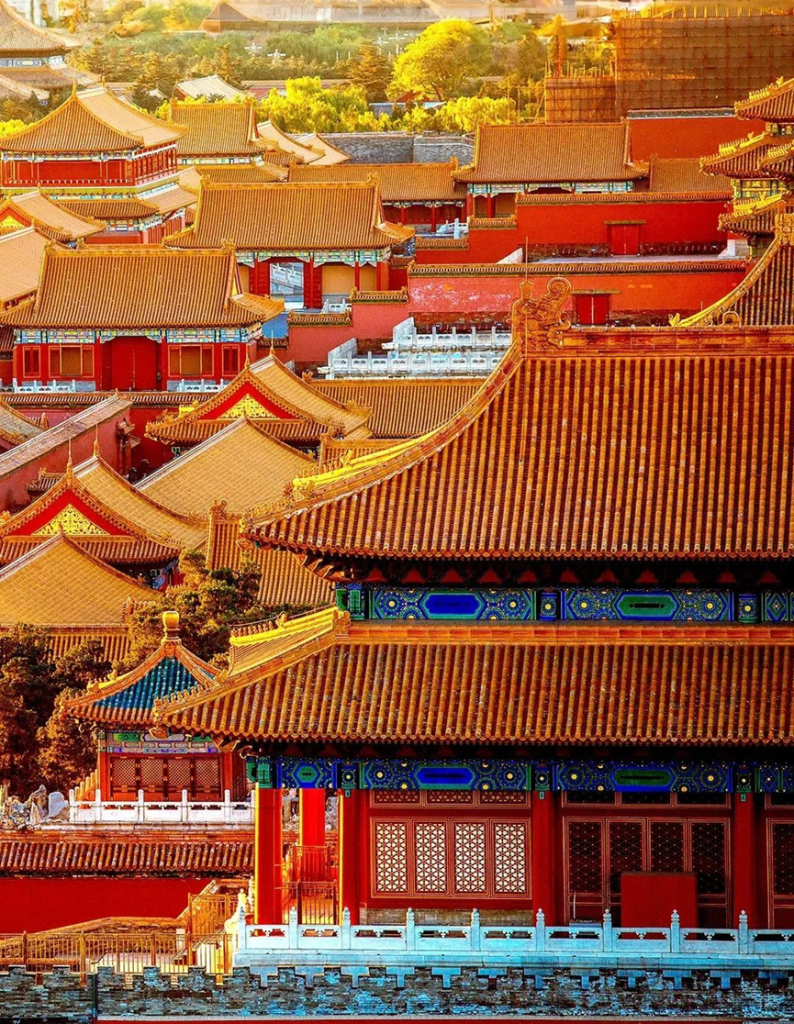Hangzhou, a city blessed by the gods, where mountains and waters intertwine, creating a landscape of poetic beauty. She resembles an ink-wash painting, elegant and fresh; she is like a Jiangnan melody, melodious and enchanting. Whether you’re strolling by the West Lake, marveling at the breathtaking scenery that is “charming in both light and heavy makeup,” or exploring the Lingyin Temple, listening to the ancient chants and bell tolls of a thousand-year-old monastery, Hangzhou will captivate you, leaving you reluctant to leave.
West Lake: The Pearl of Heaven on Earth
The West Lake is the soul of Hangzhou and one of China’s most iconic cultural landscapes. The Ten Scenes, such as “Spring Dawn on Su Causeway,” “Remnant Snow on Broken Bridge,” and “Leifeng Pagoda in the Sunset,” have been celebrated for centuries. Glide across the lake on a boat, with distant hills like ink paintings and nearby waters veiled in mist, as if you’ve stepped into a flowing landscape scroll. Wander along Su Causeway, where willow branches sway gently in the breeze, and feel the tender charm of Jiangnan’s water towns. As night falls, the lake dons a mysterious veil, with musical fountains dancing to melodies, blending modernity and tradition in perfect harmony.
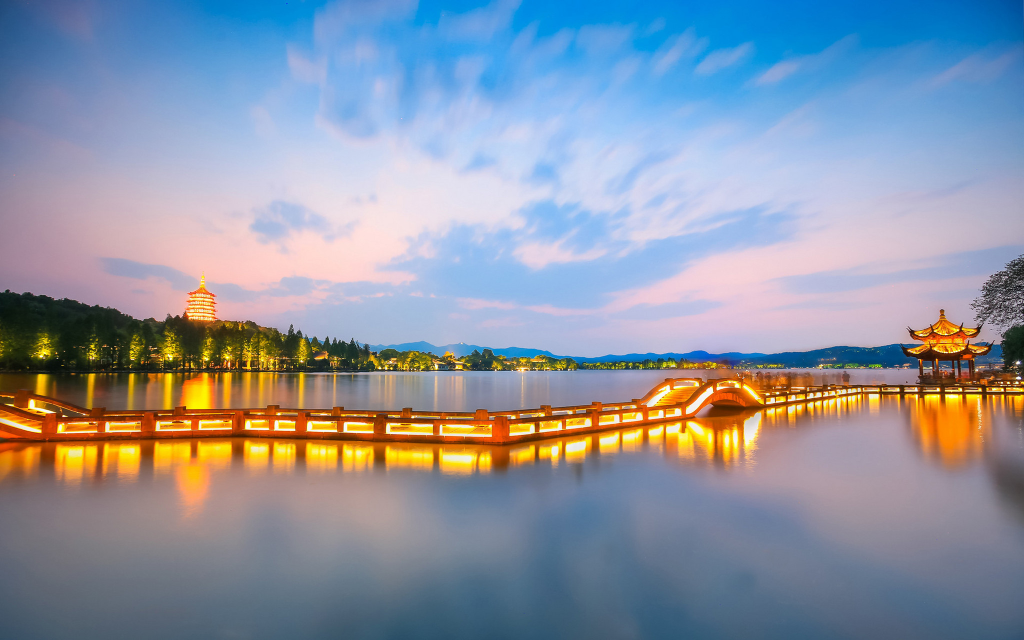
Travel Tips for International Visitors:
- Best Time to Visit: Spring and autumn (March-May, September-November) offer pleasant weather and the most beautiful scenery.
- Transportation: Hangzhou Xiaoshan International Airport (HGH) has numerous international flights, making it easily accessible. The city boasts a well-developed public transport system, including metro, buses, and taxis.
- Accommodation Recommendations: The West Lake area is home to many luxury hotels and unique homestays, catering to various budgets and preferences.
- Culinary Experiences: Hangzhou cuisine is known for its light and fresh flavors. Don’t miss local specialties like West Lake Vinegar Fish, Longjing Shrimp, and Dongpo Pork.
Lingyin Temple: The Zen of a Thousand-Year-Old Monastery
Lingyin Temple, one of China’s earliest Buddhist temples and the place where the legendary monk Ji Gong became a monk, is a sanctuary of tranquility. Towering ancient trees, thriving incense, and the lingering sounds of Buddhist chants bring a sense of peace. Step into the Great Hall, gaze upon the solemn Buddha statues, and immerse yourself in the profound depth of Buddhist culture. Behind the temple lies Feilai Peak, with its rugged rocks and vivid cliff carvings, whispering tales of history’s passage.
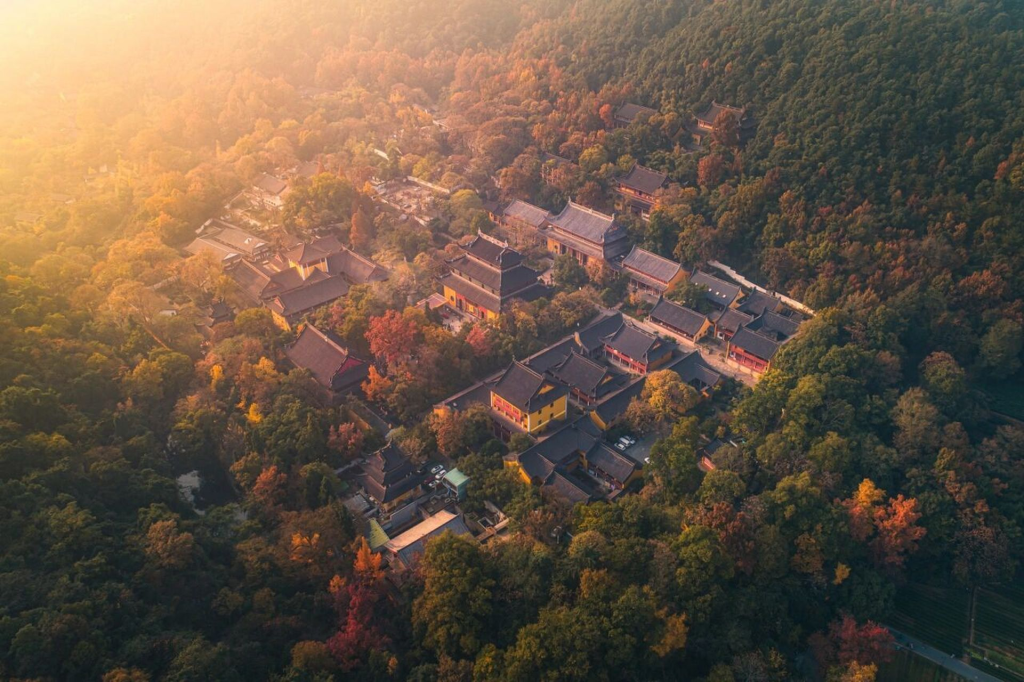
Travel Tips for International Visitors:
- Ticket Information: The Lingyin Temple scenic area ticket costs 45 RMB, and the Feilai Peak scenic area ticket is also 45 RMB. A combined ticket is recommended.
- Suggested Route: Visit Feilai Peak first, then enter Lingyin Temple to fully appreciate the depth of Buddhist culture.
- 礼仪:保持寺庙内的安静并尊重佛教习俗。
Longjing Tea: Savoring the Fragrance of Jiangnan
Hangzhou is the birthplace of Longjing tea, with West Lake Longjing being the finest of its kind. A trip to Hangzhou wouldn’t be complete without a cup of this fragrant tea. Stroll through Longjing Village, where tea plantations blanket the hills in lush green, and the air is filled with the subtle aroma of tea. Visit a local tea farmer’s home, pick tea leaves, experience the art of tea roasting, and delve into the charm of traditional Chinese tea culture.

Travel Tips for International Visitors:
- Experiential Activities: Many tea plantations offer tea-picking, roasting, and tasting experiences. Advance booking is recommended.
- Purchasing Tea: Buy from reputable tea shops and be cautious of counterfeit products.
- Tea Culture Experience: Hangzhou has numerous tea houses where you can experience traditional Chinese tea ceremonies.
Southern Song Imperial Street: A Journey Through Time
Southern Song Imperial Street, once the most bustling commercial street in Hangzhou’s history and the central axis of the Southern Song imperial city, retains its ancient charm. Cobblestone paths, carved wooden doors, and upturned eaves transport you back to the grandeur of the Southern Song capital. Wander along the street, savor Hangzhou’s local snacks, shop for exquisite handicrafts, and experience the unique blend of past and present.

Travel Tips for International Visitors:
- Local Snacks: Try Hangzhou specialties like Dingsheng Cake, Scallion Pancakes, and Wushan Crispy Pastry.
- Shopping Recommendations: The street is lined with shops selling silk, tea, and handicrafts, perfect for souvenirs.
- Cultural Experiences: The street often hosts cultural events, offering a glimpse into Hangzhou’s folk traditions.
Hangzhou, a City You’ll Never Want to Leave
Hangzhou embodies the gentle charm of Jiangnan’s water towns and the vibrant energy of a modern metropolis. Whether you’re tracing the footsteps of history or embracing the gifts of nature, Hangzhou will fulfill your every expectation. Come, let us explore Hangzhou together and experience the poetic haven of heaven on earth!
Additional Travel Tips for International Visitors:
- Visa Information: Check China’s visa policies in advance and prepare the required documents.
- Currency Exchange: The official currency is the Renminbi (RMB), which can be exchanged at airports, banks, and other locations.
- Language: Mandarin is the official language, but some tourist spots offer English services.
- Internet and Communication: Most airports and hotels in China provide Wi-Fi, and local SIM cards are available for purchase.
We hope this guide helps you plan an unforgettable trip to Hangzhou!



